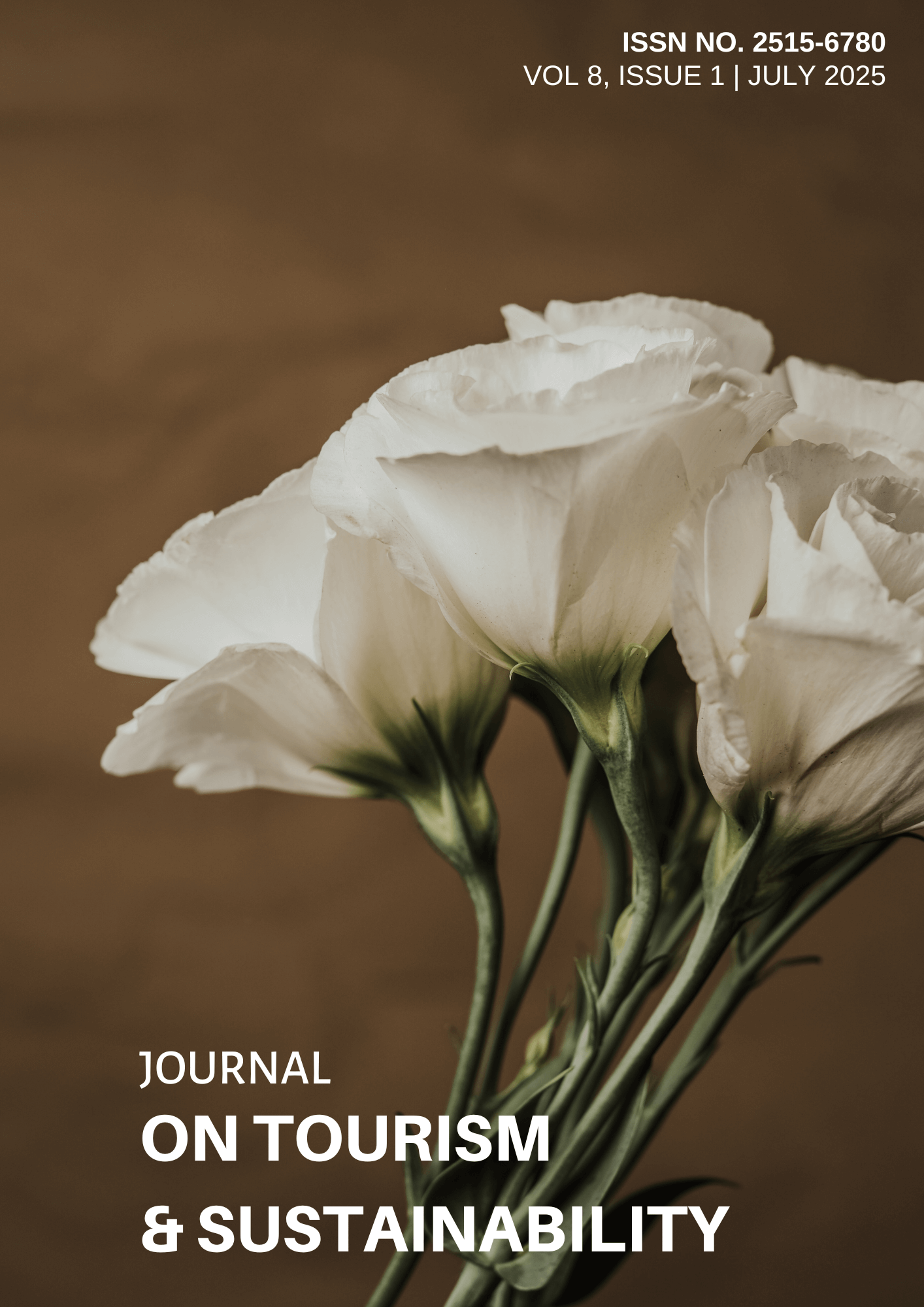Mahasu Devta, Shamanism, And Cultural Heritage: Assessing The Scope Of Spiritual And Cultural Tourism In Himachal Pradesh
DOI:
https://doi.org/10.5281/zenodo.16320417Keywords:
Dev Niti, Himachal Pradesh, Indigenous Rituals, Mahasu Devta, Shamanism, Spiritual TourismAbstract
The cultural and spiritual identity of Himachal Pradesh has been shaped by Shamanistic traditions for centuries. One of the most visible and lived demonstrations of indigenous spirituality is the worship of Mahasu Devta. This research explores the possibilities for developing spiritual tourism in Himachal Pradesh through the Shamanistic practices of Mahasu Devta, paying careful attention to the spiritual dimension, as well as the cultural dimension, of those practices. What sets Mahasu Devta apart, in addition to being a living example of indigenous spirituality, is not only the richness of the cultural experiences which provide cultural participation, the rituals, festivals, oral traditions and folk-art, but also that it enriches visitor participation and contributes to the heritage preservation. This article demonstrates how embracing spiritual and cultural tourism together creates sustainable, community-based models that include relevant experiences for visitors and positively impact residents. This paper critically examines the viability of developing spiritual tourism in Himachal Pradesh through an ethnographic and cultural study of the Shamanistic practices of Mahasu Devta. The worship of Mahasu devta is rooted in the indigenous spiritual system known as Dev Niti and is one of the few living expressions of pre-Vedic ritualism tied to governance, divine territoriality, and oral mythos of a community. The article demonstrates that Mahasu Devta's ritual ecology—a complex of divine trances (Dev Vani), symbolic acts of justice, and vibrant community festivals that has the potential to facilitate a type of spiritual tourism that is different than the pilgrimage, religious tourism or managed spiritual tourism.References
Bhasin, V. (2011). Religion and cultural traditions of the Himalayan people: A study of the Jaunsar-Bawar region. Journal of Human Ecology, 33(3), 183–196.
Chauhan, G. S. (2015). Ritual ecologies: Folk religion and sacred landscapes in Himachal Pradesh. Journal of Mountain Research, 12(2), 45–62.
Dutta, P. (2016). Oral traditions and folk narratives in the Himalayas. Indira Gandhi National Centre for the Arts (IGNCA).
Elwin, V. (1955). The religion of an Indian tribe. Oxford University Press.
Fieldwork Data. (2025). Interviews and ethnographic observations conducted in Rohru, Hanol, Kotkhai, and Jubbal [Unpublished primary data].
Fürer-Haimendorf, C. von. (1971). Himalayan Barbary: A journey through the Indo-Tibetan borderlands. John Murray.
Government of Himachal Pradesh. (2021). Tourism policy 2021. Department of Tourism and Civil Aviation, Himachal Pradesh.
Government of Himachal Pradesh. (2022). Himachal Pradesh tourism development plan. Department of Tourism and Civil Aviation. https://himachaltourism.gov.in
India Tourism Statistics. (2023). Annual report 2022–23. Ministry of Tourism, Government of India. https://tourism.gov.in
Kapoor, S. (2017). Sacred spaces and tourism in the Indian Himalayas. In R. Raj & K. Griffin (Eds.), Spiritual and Religious Tourism: Motivations and Management (pp. 110–128). CABI Publishing.
Mahasu Puran (Oral epic). (2025). Transmitted by temple priests and bards of the Mahasu Devta temples [Unpublished].
Ministry of Culture, Government of India. (2021). Documentation of intangible cultural heritage in the Western Himalayas. IGNCA.
Ministry of Tourism, Government of India. (2018). Incredible India 2.0: Strategy for spiritual tourism.
Negi, R. S. (2002). Myths, rituals and beliefs in the Himalayas: A case study of Mahasu Devta worship. Indian Anthropologist, 32(1/2), 85–96.
Sankrityayan, R. (1939). Himachal ki lok kathayein. Hindi Sahitya Sammelan.
Sax, W. S. (2006). Ritual and the problem of efficacy: The case of Mahasu Devta. Journal of Ritual Studies, 20(2).
Sax, W. S. (2009). God of justice: Ritual healing and social justice in the central Himalayas. Oxford University Press.
Sharma, C. K. (2013). Shamanism and spirit possession in the Western Himalayas: The case of Mahasu Devta. Indian Folklife, 45(2), 10–14.
Sharma, K. L. (2012). Caste, social inequality and mobility in rural Himachal Pradesh. Rawat Publications.
Singh, K. S. (1996). People of India: Himachal Pradesh. Anthropological Survey of India.
Thakur, D. (2005). Himalayan gods and ritual practices: A cultural geography. Minerva Publications.
Thakur, D. S. (2004). Cultural heritage of Himachal Pradesh. Deep & Deep Publications.
UNESCO. (2018). Safeguarding intangible cultural heritage and sustainable tourism. https://ich.unesco.org
Verma, A. (2020). Ecotourism and indigenous traditions in the Western Himalayas: A case study of Mahasu region. Himachal Studies Journal, 8(1), 59–74.
Downloads
Published
Issue
Section
License
Copyright (c) 2025 Nitin Vyas, Priti R Nagal, Aniket Dhanda

This work is licensed under a Creative Commons Attribution 4.0 International License.
- Authors retain copyright and grant the journal right of first publication with the work simultaneously licensed under a Creative Commons Attribution License that allows others to share the work with an acknowledgement of the work's authorship and initial publication in this journal.
- Authors are able to enter into separate, additional contractual arrangements for the non-exclusive distribution of the journal's published version of the work (e.g., post it to an institutional repository or publish it in a book), with an acknowledgement of its initial publication in this journal.
- Authors are permitted and encouraged to post their work online (e.g., in institutional repositories or on their website) prior to and during the submission process, as it can lead to productive exchanges, as well as earlier and greater citation of published work.




